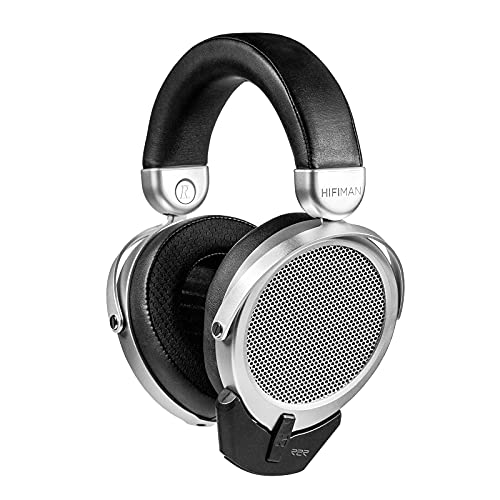Planar Magnetic Vs Dynamic Driver Headphones
The majority of headphones and IEMs make use of a dynamic driver that uses cones that move back and forth, generating sound waves. The planar magnetic headphones are more expensive and come with flat diaphragms, but provide a clearer image.
However, they require more power to drive the large drivers, so might not be suitable for portable devices. The 'punch', or slam, is a result of this. For certain audiophiles, they're an improvement.
The Basics
Planar Magnetic Drivers are quickly becoming a staple in headphones due to their rich sound and clear quality. Even though they're not as well-known as dynamic driver headphones however, you can find some of the top Planar Magnetic Headphones from big-name brands such as Audeze or Oppo. Planar Magnetic Headphones are a little different from traditional dynamic driver headphones as they don't use the use of a moving voice coil to generate vibrations in the diaphragm. Instead, the charged part of the driver is distributed across the flat surface of the diaphragm, which allows for more uniform movement.
A less complex mechanism makes the planar magnet driver more efficient in producing sound waves. This can translate into better distortion levels, a better response to music's transients, and an overall more natural soundstage.
While there are a number of advantages to choosing headphones that have a planar magnetic drive however, this technology comes with a few limitations that you must be aware of. First, you should be aware that these headphones typically emit more sound than regular open-back dynamic models. This is due to the fact that the flat diaphragm of the planar magnetic headphones will push sound in both directions, meaning that sound waves will be released from the earcups and into the surrounding. This is something you should take into consideration if you'll use headphones in public places or at the office.
Planar magnetic headphones require more power than other models to reach their full potential. The thick, wide diaphragms require more energy to move in a uniform manner and are therefore heavier and more bulky. This is a problem if you prefer to keep your headphones light and portable.
Additionally, planar magnetic headphones can sometimes lack the slam and punch many listeners like. This is due to the fact that the diaphragm's flat shape doesn't move in a pistonic way as traditional dynamic headphones, so they can't be as 'plucked' as listeners might wish for. However, this is not a universally held opinion and there are a few high-end planar magnetic headphones (like the HiFiMAN Sundara) that do a great job of image distribution and punch.
If you're willing to overlook these issues, and are ready for a headset that has distinct soundstage and unmatched clarity and sound quality, then these headphones are definitely worth considering. Be sure to think about the additional cost and power requirements as well as the size and weight of your headphones prior to making a decision. There are a variety of excellent planar magnetic headphones available at a reasonable price. This includes the renowned HiFiMAN Sundara. This offers a taste of the speed precision, accuracy, and clarity that planar headphones offer without costing a fortune.
Advantages
While there are plenty of excellent headphones that utilize dynamic drivers, the majority of the best headphones in a variety of price ranges utilize planar magnetic technology. These headphones are usually more expensive than their dynamic counterparts but also offer superior performance, including a wide soundstage and an immersive listening experience.
find out here now make use of two or more magnets that are suspended near the flat surface of the driver and a conductor tracks on the diaphragm to generate vibrations. The electrical impulses that travel through these wires generate an electric force that interacts with the magnets, causing them to vibration. The force that results is evenly distributed across the entire surface of the diaphragm that does not cause distortion in the same way as dynamic headphones do.
These headphones have a larger soundstage and better transient response than dynamic models. They can also handle audio changes with greater accuracy. They also have lower resonance and a more rounded frequency response, making them more accurate in the bass range than dynamic headphones and offering an even, fuller sound.
Planar headphones are more accurate and have more natural sound. This makes them more appealing to audiophiles. This is evident in the clarity of their audio and the way they reproduce the stereo balance and position of instruments. This is especially true for closed-back models, such as the HiFiMAN Sundara, that offer an even and spacious soundstage.

Additionally, they are generally less prone to breakup, which happens when the forces acting on the diaphragm weaken its structural integrity and cause various areas of the surface to go out of sync. This is a problem that could be caused by inadequate design or manufacturing and is one of the primary reasons why planar headphones are regarded as the premium choice.
However, this type of headphone does come with disadvantages. It requires a significant amount of power to run it. This means that they are often heavy and bulky, which can make them less portable than their more powerful counterparts. They also tend leak more sound. This means that you will have to be in an area that is quiet to listen to these headphones without disturbing other people. The most recent models have improved noise isolation and seals to help mitigate this problem. Because of this, it's hard to give a definitive answer as to whether or the planar magnetic headphones are truly better than dynamic ones. It really depends on your priorities and what you want from your audio experience.
